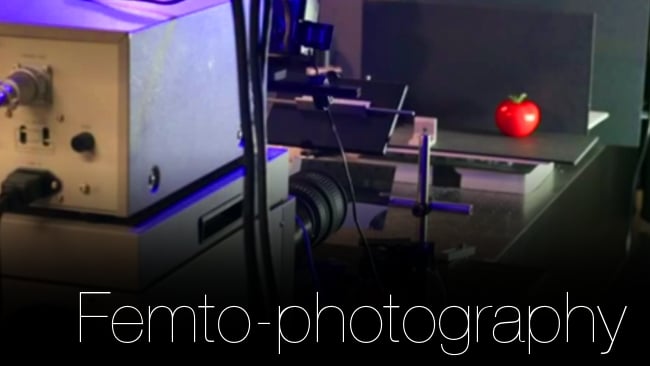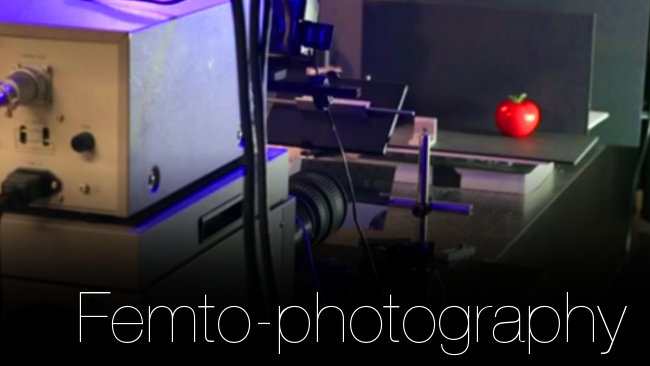

Move over Phantom Flex. There's experimental tech out there that explodes our current conception of slow motion video.
As a regular reader of RedShark, I'm sure you're familiar with the Phantom Flex camera, which is the reigning king of slow-motion video, capable of shooting 4K resolution video at 1000 fps and HD at 2000 fps. While these specs are definitely impressive by today's standards, there is a highly experimental camera system at MIT that may change the way you think of slow motion.
A team led by Ramesh Raskar, head of the MIT Media Lab's Camera Culture research group, developed a camera prototype that images at a whopping 1 trillion frames per second. This burgeoning field of imaging research, called femto-photography, works by shooting individual packets of photons and measuring light information as it scatters.
Magical Properties
During Rakar's TED talk, he showed video of a packet of photons "slowed down by a factor of ten-billion," hitting and spreading over a Coke bottle. While that may not sound like a big deal, he relayed that if a bullet was slowed down at the same factor, it would take an entire week to watch the video.
According to Rakar, femto-photography is "a new imaging technique so fast that you can create slow-motion videos of light in motion, and with that, you can create cameras that can look around corners, beyond line of sight, or see inside our bodies without an X-ray, and really challenge what we mean by a camera."
Considering the Future
Granted, Rakar's TED talk (and the video below) first surfaced in 2012, but as our Industry presently undergoes a wide-scale transition to 4K and higher resolution standards, it's fun to look to the technological horizon. Maybe the future isn't about higher resolution or wider aspect ratios, but a radical definition of video imaging. As Rakar says, we should "stop obsessing about the mega pixels in cameras, and start focusing on the next dimension in imaging. It's about time."
Tags: Technology


Comments